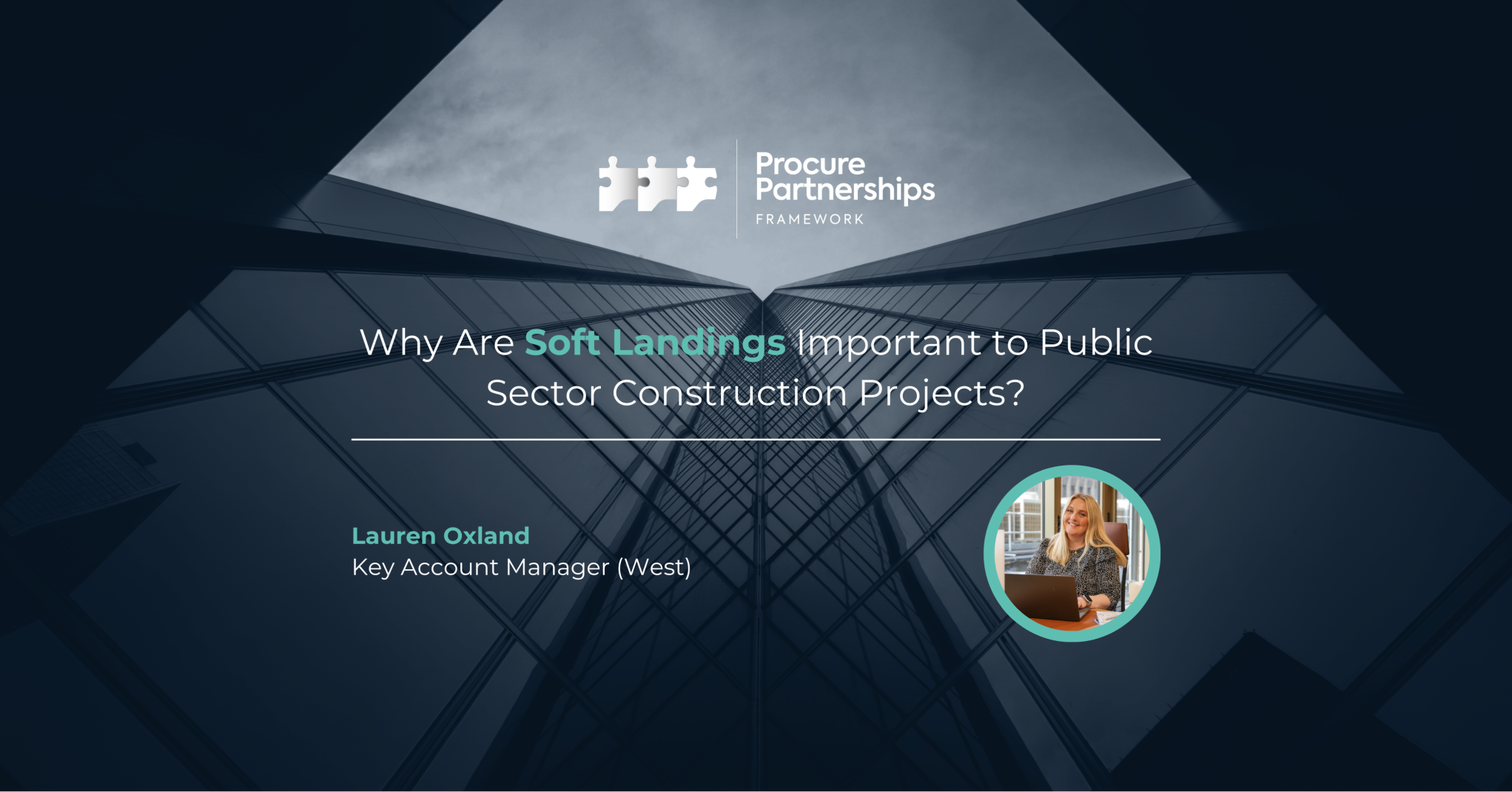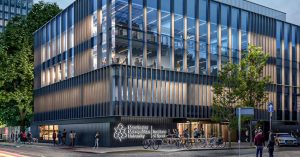Public sector bodies are increasingly aware of their responsibility to construct buildings with low environmental impact and decarbonise buildings to achieve the Government’s Net Zero target by 2050. The building’s ‘performance’ is in the spotlight, not just its function and form. There is a need to find a solution to the gap that often exists between the design expectations of the building, and the operational performance. So,
In this article, Key Account Manager Lauren Oxland explores how a Soft Landings strategy can help to bridge this gap.
What are Soft Landings?
The term Soft Landings refers to a strategy designed to make an easy transition from the construction to occupation of a building and ensure optimal operational performance.
Problems can occur at any point throughout the project’s lifecycle, including conception briefings, project design, construction, and operational management. The problem can worsen because of a separation between the construction teams and facilities management teams, condensed commissioning periods, or poor training at building handover. Design & build teams traditionally end their involvement at handover, restricting knowledge transfer to the management team and disabling a lessons learnt feedback loop to the design team. With management teams seldom required to attend briefings or design discussions, opportunities to add value in the process by including their building operational experience are missed. These problems and missed opportunities culminate in a building that cannot maximise its full potential and consequently a lesser quality building for the end user.
Soft landings prepare the end user for occupancy and encourage a strategy for early inclusion of operational performance discussions, training and familiarisation.
Why are Soft Landings Important and what are the benefits?
The simple answer is a Soft Landings strategy ensures you create a building that meets the needs of the end user. There is increasing pressure on public sector bodies and property owners to demonstrate how well their buildings perform and run, not just to investors or stakeholders, but also to occupiers who will be looking to keep maintenance and operational costs low. Adopting a Soft Landings strategy helps to bring the design, construction, and management teams together, working collaboratively to implement project plans, processes and a supply chain to deliver sustainable and healthy buildings that meet the expectations of both stakeholders and clients by focusing on operational outcomes.
Soft Landings can help to:
- Improve Customer Experience – property owners can create spaces in line with design intent and client needs. Facilities management teams can operate buildings to optimal performance. Project teams can ensure fit outs are compatible with the building’s design and services. This all supports the customer’s experience of using the space.
- Improve Performance Outcomes – clear project success criteria throughout the project lifecycle ensures the building delivers on its design intent as well as operational outcomes, improving efficiency and performance, and driving down costs.
- Streamline the Completion Process – ensuring a thorough handover and aftercare service between the contractors and the owners/management team ensures knowledge transfer so the building can be controlled and used to its full potential.
- Improve Collaboration and Communication – an inclusive approach throughout the project between design, construction and management teams ensures collaborative input, ownership and responsibility and each stakeholder feels valued and invested in the project. This open and honest communication can only serve to aid the delivery of the success criteria.
Government Soft Landings (GSL)
The Government first announced in 2012 that by April 2016 all publicly funded construction projects should be delivered in accordance with Government Soft Landings (GSL) as part of public sector adoption of Building Information Modelling (BIM) to reduce the cost of public sector construction. The Government Construction Strategy published in May 2013 describes the alignment between the interests of those who design and construct an asset with the interests of those who use and manage it as the ‘golden thread.’ GSL should be used to maintain this ‘golden thread’ to ensure its preservation into the building’s operational phase. GSL sits hand in glove with BIM to inform facilities management systems, improving and enabling the future management of completed buildings. As a result, the BIM Task Group has taken ownership of GSL and has made the following commitments:
- GSL will be used to reduce cost and improve performance of asset delivery and operation.
- A GSL Lead will be appointed to manage the GSL Golden Thread on all projects.
- Aftercare will be managed during early operations, supported by the design and construction team.
- Post Operational Evaluation will be used as a collaborative tool to measure and optimise asset performance and embed lessons learnt.
- BIM will be progressively used as a data management tool to assist the briefing process.
The Soft Landings Framework
First published in 2009, the BSRIA’s Soft Landings Framework 2018 (BG 54/2018) is a revised six-Phase approach to help construction teams implement Soft Landings in their projects. The phases offer guidance on how to incorporate the client’s needs throughout the project lifecycle, to smooth the transition into building use and address typical Post-Occupancy Evaluation (POE) problems. It has been designed to underpin environmental assessments such as BREEAM and LEED. The six key phases are:
- Inception and Briefing – clearly identifying the project’s success criteria and how they should be championed throughout the project.
- Design – reviewing similar projects and using lessons learnt to inform design and ensure success targets are realistic.
- Construction – ensuring the construction team are aware of the success criteria and that all construction activities and value engineering exercises support these criteria.
- Pre-Handover – making certain the building is ready for occupancy and the facilities management team fully understand how to manage and control the building.
- Initial Aftercare – providing information and support to the end user and ironing out any teething troubles.
- Extended Aftercare and Post-Occupancy Evaluation (POE) – analysing building performance against the success criteria, finding solutions to any operational problems, conducting and sharing the lessons learnt.
In August 2015, BSRIA published ‘Soft Landings & Government Soft Landings, A Convergence Guide For Construction Projects.’ Whilst the two frameworks align with many overlapping similarities, the key significant differences are that the BSRIA Soft Landings Framework encourages collaboration and awareness of operational outcomes through stakeholder workshops and design reviews, managed by the Soft Landings Champion. Conversely GSL is more regimented in relation to the BIM process and evaluation against project targets. Both frameworks support the implementation of Soft Landings in public sector construction projects.
Meeting Client Needs Today to Ensure Better Buildings for the Future
At Procure Partnerships we support Soft Landings to ensure clients end up with a building that meets their needs and construction teams are working collaboratively with design and facility management teams to optimise the performance of the buildings they create. Through our specialist knowledge of the construction industry, we provide a UK procurement framework that helps public sector bodies achieve their strategic goals, partnering with construction companies who create buildings that meet client needs and strive for innovation that ensures better buildings for future generations.



